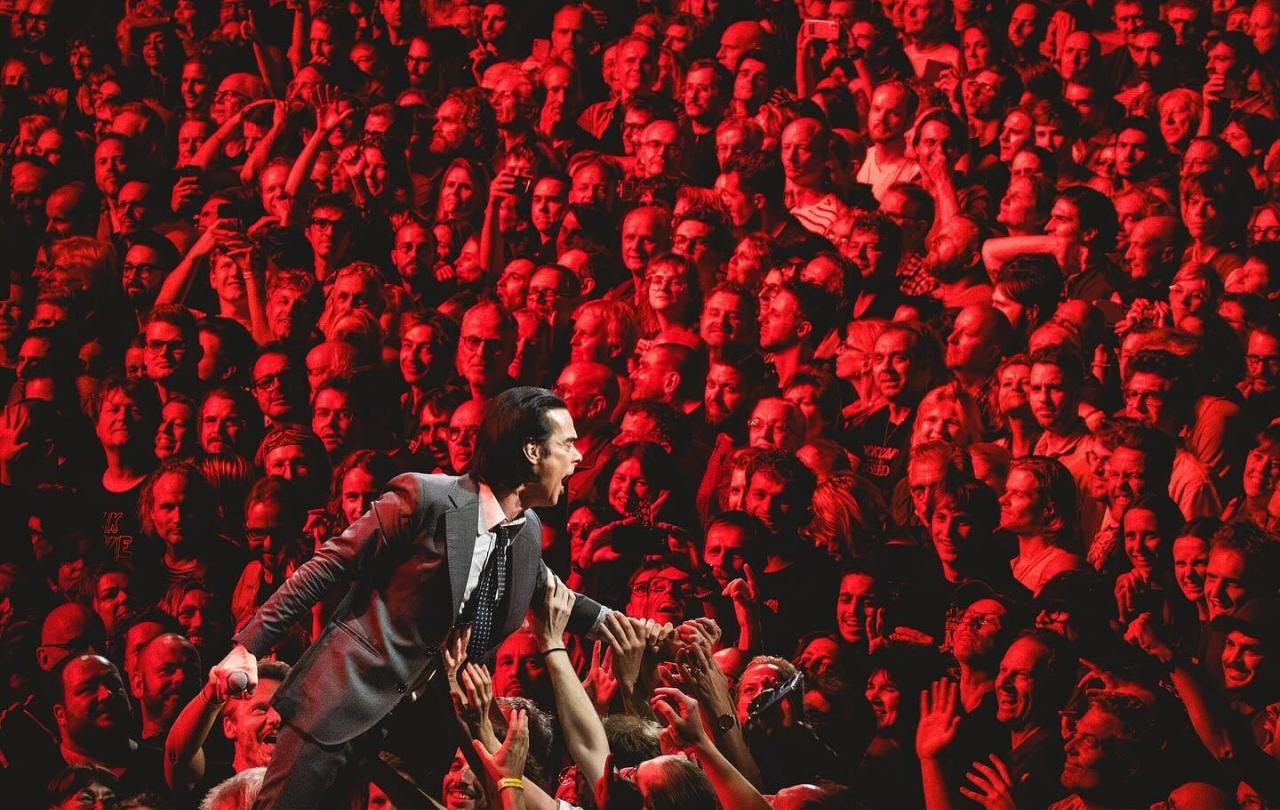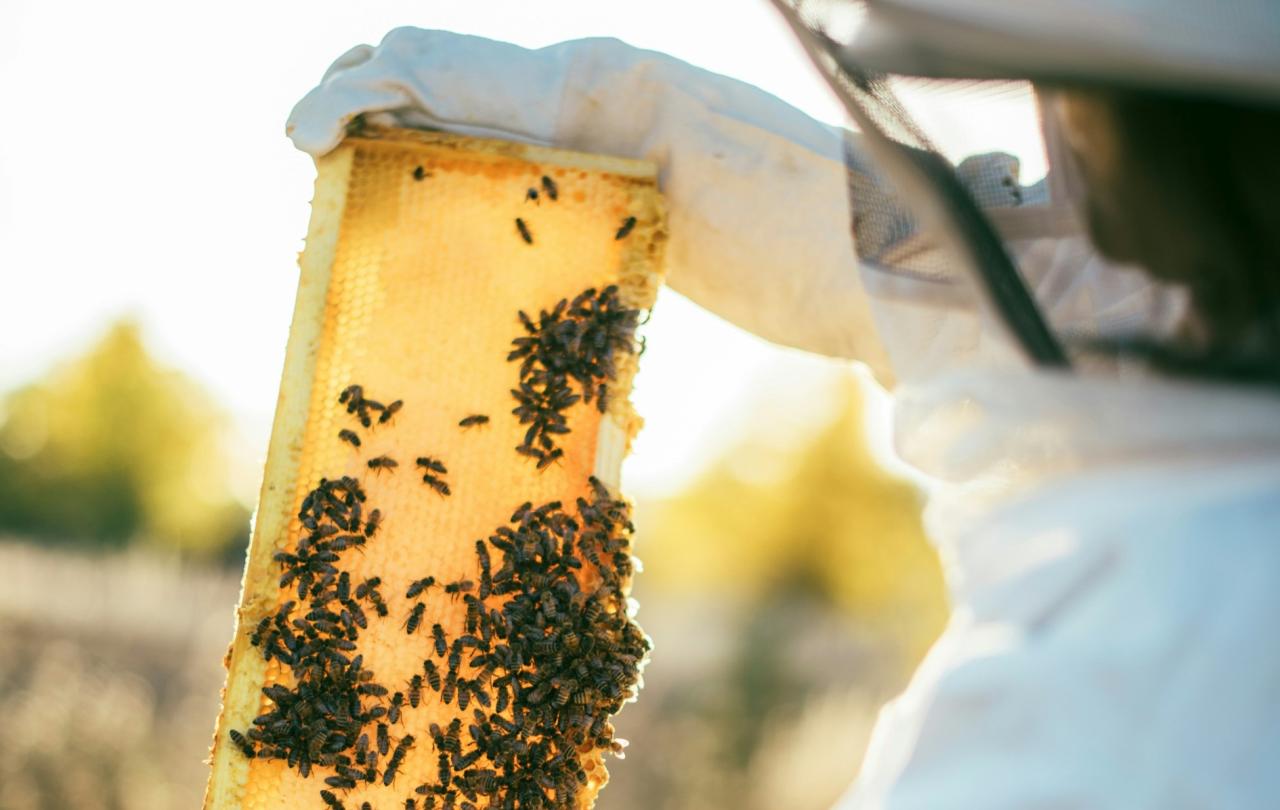
I recently went to Nick Cave and the Bad Seeds’ Wild God Tour.
I was told that it would be a terrific show, and it was. I was told that Cave would be more charismatic and commanding than he’s been in decades, and he was. I was told that it would be some kind of spiritual experience, and it was…
Kind of.
Those who are likening it to a ‘spiritual’ (including ‘This Country’ actor, Charlie Cooper) experience are certainly onto something, the whole production is designed to be transcendent, it’s just that the adjective they’re opting for is a little too vague. Instead, I would suggest that the show is a religious experience.
Now, hear me out - I know that we tend to feel nice and comfortable with the ambiguity of the former adjective, and much more cautious when it comes to rigidity of the word I’ve subbed it out for. If you just winced at the sight of the big, bad, R-Word, I get it. It comes with all kinds of wince-worthy connotations. A lot of it, deserved. Some of it, not.
But, like it or not, I truly don’t think that Nick Cave is giving us the comfortable luxury of vague-ness.
When I wrote about the Wild God album upon its release, I mentioned that the ‘Wild God’ to whom the record is an obvious ode is not abstract. Rather, the ‘wild god’ is the Christian god. The album attaches itself to a specific story, it finds its home within a specific paradigm. And the same is true of the tour. I would propose, if I may be so bold, that Cave and his Bad Seeds have spent the past few months telling the Jesus-story in every city they’ve found themselves, and subsequently, taking tens of thousands of people to church.
I would hate for you to think that my objective here is to stick a flag on the hill of this album/tour/artist. It’s not my intention to claim Nick Cave for ‘team Christianity’; it’s not necessary, he speaks continuously and profoundly about his own faith. Rather, as someone who has lived her life according to the very same Jesus-story, I’m simply offering you a lens through which you can gaze upon this touring work of art.
So, I’ll suggest it again – the Wild God tour is a religious experience.
And I know that sounds too constrictive of an analysis, but I think that’s on us for ever kidding ourselves into thinking that ‘religious’, ‘Christianity’ and ‘church’ were small words.
That’s certainly not the way Nick views them. In a recent issue of his Red Hand Files, he writes,
‘ I experience a certain vague ‘spiritualness’ within the world’s chaos, an approximate understanding that God is implicit in some latent, metaphysical way, yet it is only really in church – that profoundly fallible human institution – that I become truly spiritually liberated. I am swept up in a poetic story that is both true and imaginative and fully participatory, where my spiritual imagination can be both contained and free. The church may appear to some as small, even stifling, its congregation herdlike, yet within its architecture, music, litanies, and stories, I find a place of immense spiritual recognition and liberation.’
Fascinating, isn’t it? The concept feels kind of upside down. How could confinement cultivate liberation? How could boundaries ever encourage freedom, or particularity somehow hold entirety?
Can the ‘spiritual imagination’ truly be ‘both contained and free’? I think it can. In fact, I think that would be my own story, too. And, what’s more, I think the Wild God tour is some kind of proof of concept.
Can art be bursting with rage and religion? I think Nick has just proved that it can. I think he is probing, once again, at the myth that faith and hope can’t sit alongside carnage.
The whole show is framed by Cave’s joyous bewilderment at his own conversion – song by song, it tells the story of how he has been wading through the thickets of grief, his eyes steadily fixed on the God who rescued him ‘just in time’.
It’s specific. It’s religious.
And here’s the funny thing: the show having such a specific story to tell doesn’t seem to have a narrowing effect. Instead, songs about storms in the tiny town of Tupelo and girls who live on Jubilee Street seem to be swept up into a story that’s big enough to hold them, big enough even, to imbue them with yet more meaning. Doubt also sits comfortably here. As does anger and profanity.
Can something be sweary and sacred? Can art be bursting with rage and religion?
I think Nick has just proved that it can. I think he is probing, once again, at the myth that faith and hope can’t sit alongside carnage. He’s finding holes in the idea that religion is a place where freedom goes to die, picking a fight with the claim that ambiguous spirituality, or even outright irreligion, is more freeing.
It’s a big old fight he’s picked, one that’s been fought – in one way or another – since the beginning of time. I guess, as a Christian, it’s a fight that I have picked, too. I have placed my life (and, if we’re going to get weird with it, my afterlife) within the confines of a particular story. Am I certain that I’m right? Of course not – otherwise my faith would be faith-less, no? Nevertheless, I too have chosen to place my understanding of the eternal in the confines of the particular. I, too, am trusting that within the boundaries of the Christian story, there’s space for me to run free.
The word ‘religion’ is roomier than we are often urged to believe. Need convincing? Nick Cave is your man.





